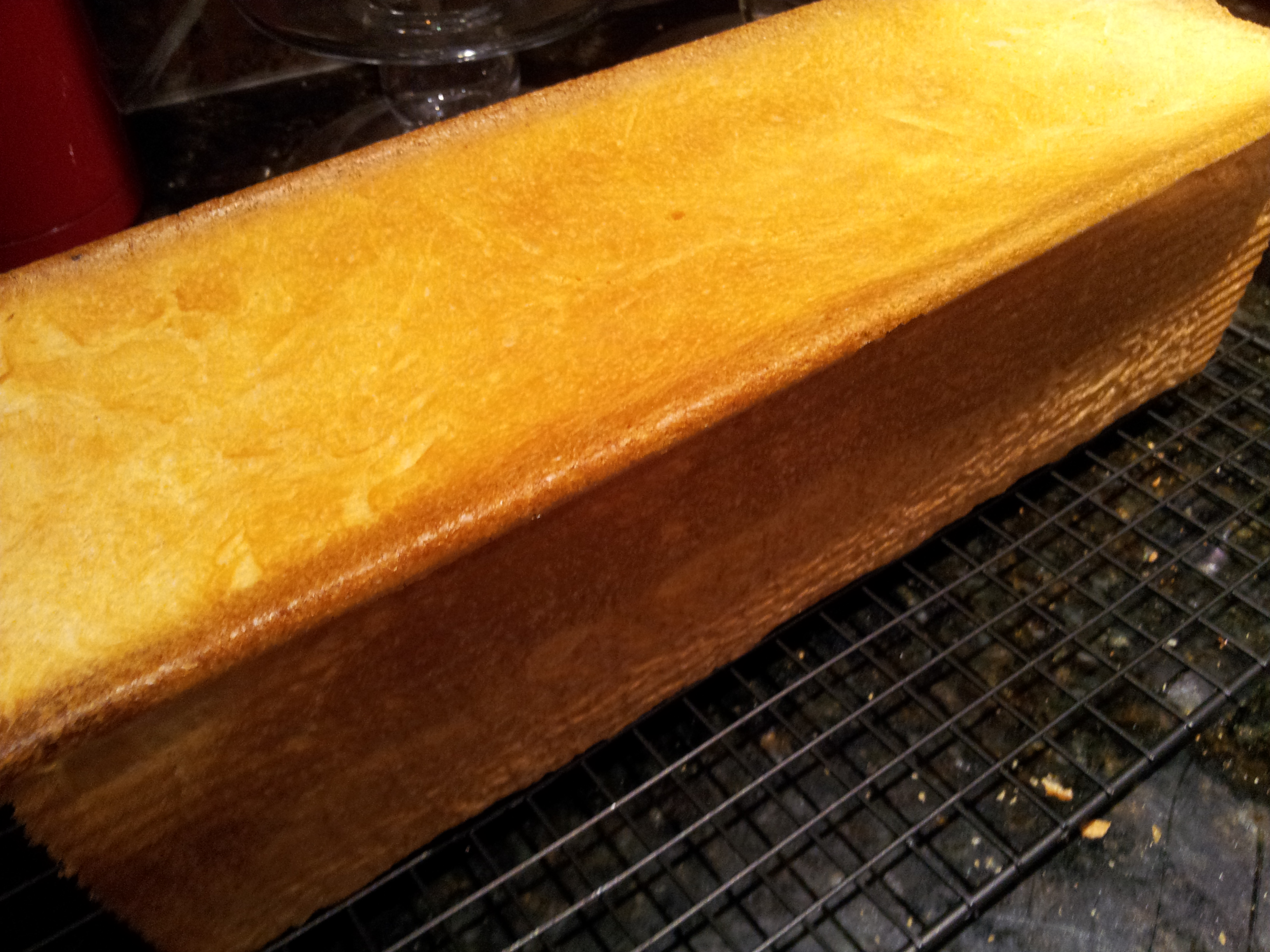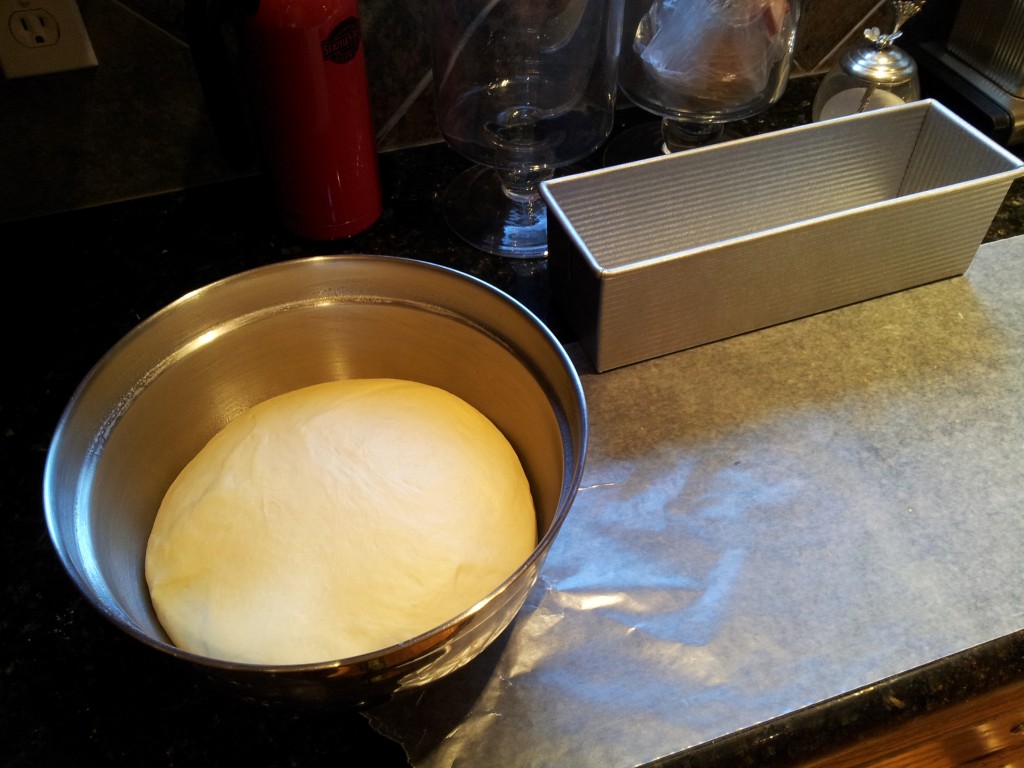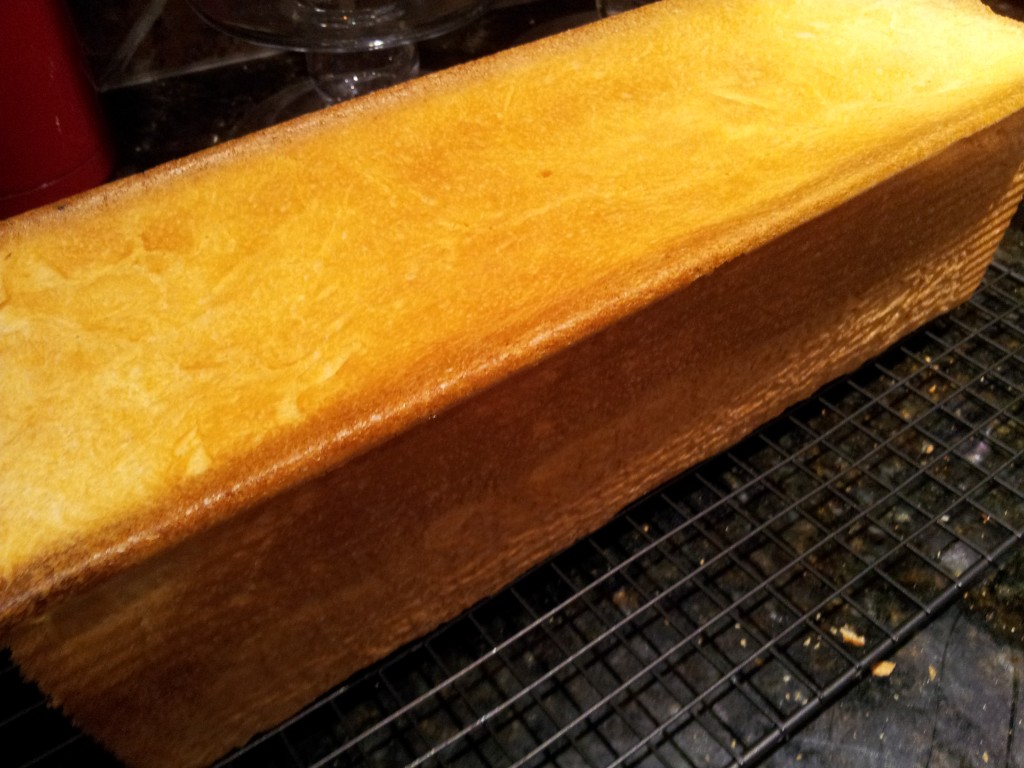I normally like richer, specialty breads – the heavy kind you find in some European bread shop, each for its own purpose and recipe – but a recent trip to the grocery store made me curious about the type of ordinary bread most Americans are eating. After looking at the nutrition label of several major baking companies, I was disgusted. They read like something out of a chemistry class; high fructose corn syrup, soybean oil, calcium sulfate, mono and diglycerides, ethoxylated mono and diglicerides, sodium steroyl lactylate, calcium peroxide, datem, ascorbic acid, azodicarbonamide, guar gum, calcium propionate, monocalcium phosphate, ammonium sulfate, and soy lecithin, to name a few. Call me old-fashioned but I think bread should have only a handful of ingredients. The fewer steps, and the fewer fillers or preservatives, between you and the fields in which the wheat was grown, the better.
[mainbodyad]This put me on a mission to add one or two recipes to the permanent collection that can mimic what most Americans want when they say they are interested in making a ham sandwich or putting strawberry jam on toast. Fortunately, I already had the tools. The last time I talked about one of my bread projects, I mentioned buying some commercial Pullman pans that have a secure lid that attaches to them to replicate the shape of the loaves you find in major grocery stores. (If you don’t have any, I highly recommend them. Amazon has the standard 13″x4″x4″ on sale for 44% off at the moment.)
The first step was to find a suitable white or potato bread. The best option was to go with a traditional Pain de mie, which is a high fat bread with a lot of butter, milk, dry milk, and a bit of white sugar. The latter is unusual as I normally like to rely on honey if I want to make a sweeter bread, but I considered it an acceptable sacrifice given the parameters of the mission. Counting the tiny bit I used to proof the yeast, the finished loaf has between 0.5 and 1.0 grams of sugar per slice depending on preferred thickness.
This afternoon, I decided to test a Pain de mie recipe from the King Arthur Flour company. It turned out wonderfully. Even though it looks the same, it tastes so much better than the sawdust that masquerades as sandwich bread in this country, especially when you take it out of the oven, it’s warm, and you hear that pleasant “crack” sound as you crush through the golden layer on the outside of the loaf with your bread knife. It was the most enjoyable dough I’ve ever worked with as the fat content from the diary (whole milk, dry milk, and butter) causes it to be perfect, smooth, and pliable. It’s definitely a treat – I wouldn’t want it every day over my heavier, denser, traditional breads – but I’ll be making it in the future.
The thing that surprised me is how big the cost differential is. Not only is the product far better, the homemade version comes to between 10% and 20% of the retail price of store bread. If you enjoyed baking, and went through only a single loaf per week, your family could save a couple hundred dollars per year on your grocery bill by having the better bread if you were able to work in the time on a weekend to put it together. Invest the savings in an index fund, earn average historical rates of return, and by the end of an adult life expectancy, you’d have an extra $631,241 sitting around in your portfolio. That’s one of the ways the dairy farmer in my hometown built the biggest fortune at the bank trust department; frugality combined with a habit of buying stakes in blue chip stocks that he and his wife held forever.
[mainbodyad]





